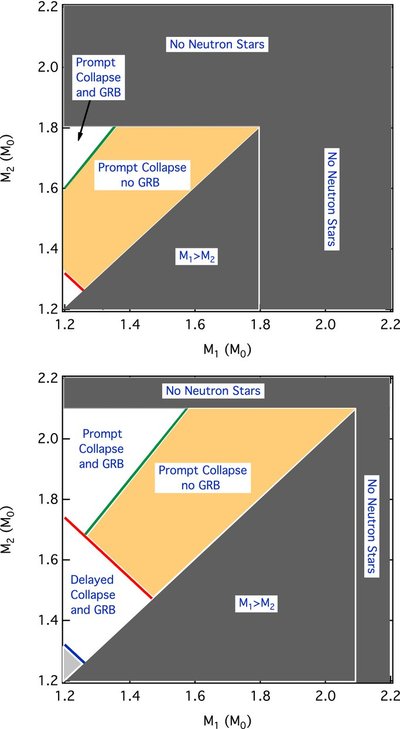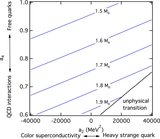Image Details

Caption: Figure 2.
Allowed regions of the parameter space of the masses of two coalescing neutron stars that leads to a short-duration gamma-ray burst. For simplicity, the second neutron star is assumed to be larger than the first neutron star. The left panel shows the result when the maximum mass of a non-spinning neutron star is equal to M max = 1.8 M ☉ and the right panel shows the result for a maximum mass of 2.1 M ☉. In the right panel, the blue line corresponds to a total mass of M 1 + M 2 = 1.2 M max, below which a neutron star rotating as a solid body can be supported against collapse by centrifugal forces. In both panels, the red line corresponds to a total mass of M 1 + M 2 = 1.4 M max, above which a neutron star cannot be supported against collapse, even if it is rotating differentially. The green line corresponds to a mass ratio of M 2/ M 1 = 4/3, above which the initial outcome of the collision is a black hole surrounded by a massive torus. Short-duration gamma ray bursts can be generated when the outcome of the collision is either the delayed collapse of a supermassive neutron star into a black hole, or the prompt collapse of the two stars into a black hole surrounded by a massive torus. The allowed region of the parameter space for M max = 1.8 M ☉ is marginal but increases rapidly as M max exceeds 2 M ☉.
Copyright and Terms & Conditions
© 2010. The American Astronomical Society. All rights reserved.




